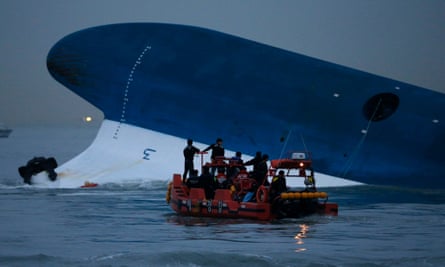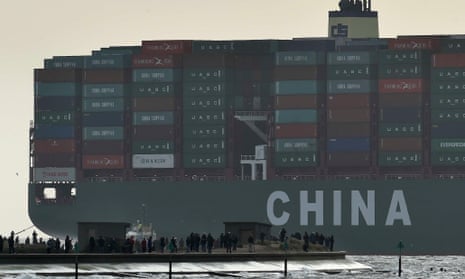The world is losing fewer ships at sea, with only 75 lost last year – the lowest number in a decade, according to insurers Allianz Global Corporate and Specialty (AGCS).
This article includes content hosted on d26adhsj11a4c2.cloudfront.net. We ask for your permission before anything is loaded, as the provider may be using cookies and other technologies. To view this content, click 'Allow and continue'.
Sinking and submerging has been the most common cause of ships being written off over the past decade and this was the case in 2014 too, with it accounting for 49 of the 75 losses. Other significant causes includes ships being wrecked or stranded (13 losses) and four fires or explosions.
Over a third of losses come from two Asian maritime regions. The seas round South China, Indo China, Indonesia & the Philippines accounted for 17 losses while those surrounding Japan, Korea and North China had 12.
Between 2004 and 2014, 1,271 ships have been lost.
A vessel based in the Great Lakes of North America has been particularly unlucky despite never having been fully written off. It has been involved in 19 incidents over the last eight years, including a fire, steering failure and colliding with a submerged log.
Passenger safety put into focus
Although these figures are indicative of a safer shipping network generally, those at sea are not necessarily out of the darkest waters yet.
One of the newest fears is cyber-attacks due to the increasing dependence on e-navigation systems. Another is piracy, which while declining in Somalia and the Gulf of Guinea for a fourth successive year, keeps growing in south-east Asia and the Indian subcontinent.

The recent high-profile loss of several passenger ships is also a major cause of concern. Seven passenger ships were lost in 2014, with by far the most well-covered being the April sinking of the Sewol ferry in South Korea.
The incident led to 300 deaths, the resignation of the country’s prime minister and the captain being sentenced to 36 years in prison. Overloading and poor cargo securing were among the cocktail of factors blamed.
At the end of the year a fire on board the Norman Atlantic passenger ship in Greek waters caused at least 12 deaths although hundreds of people were rescued.
With both tragedies happening just two years after the Costa Concordia disaster, they have further renewed concerns about the safety of these passenger vessels.
Dr. Sven Gerhard, global product leader hull & marine liabilities, AGCS, said:
What we have seen from the Sewol, and what we have so far heard from the Norman Atlantic, is that, in many cases, construction of the vessel is not always the only weak point. Levels of crew experience, training and emergency preparedness can also often be inadequate and this can be crucial, particularly on these types of vessels.
Bigger ships, bigger losses
Another major industry trend in the spotlight is the increasing size of container ships. Shipping containers have been a vital booster of world trade and with that has come a drive to invent vessels carrying more of them.
The Chinese-owned CSCL Globe, which set off on its maiden voyage late last year, is one of the biggest ever. As long as four football fields, it can carry 19,000 standard-sized 20ft-containers (teu).
With the rapid growth of the container industry, it was fitting that the CSCL Globe was swiftly usurped by the Mediterranean Shipping Co’s MSC Oscar vessel as the largest afloat with its 19,224 teu capacity.
The AGCS report estimates that the loss of a vessel of this size could cost at least $1bn. They also estimate that it could take at least two years to salvage all the containers from an incident-struck 19,000+ teu vessel – if it is possible at all.

Comments (…)
Sign in or create your Guardian account to join the discussion